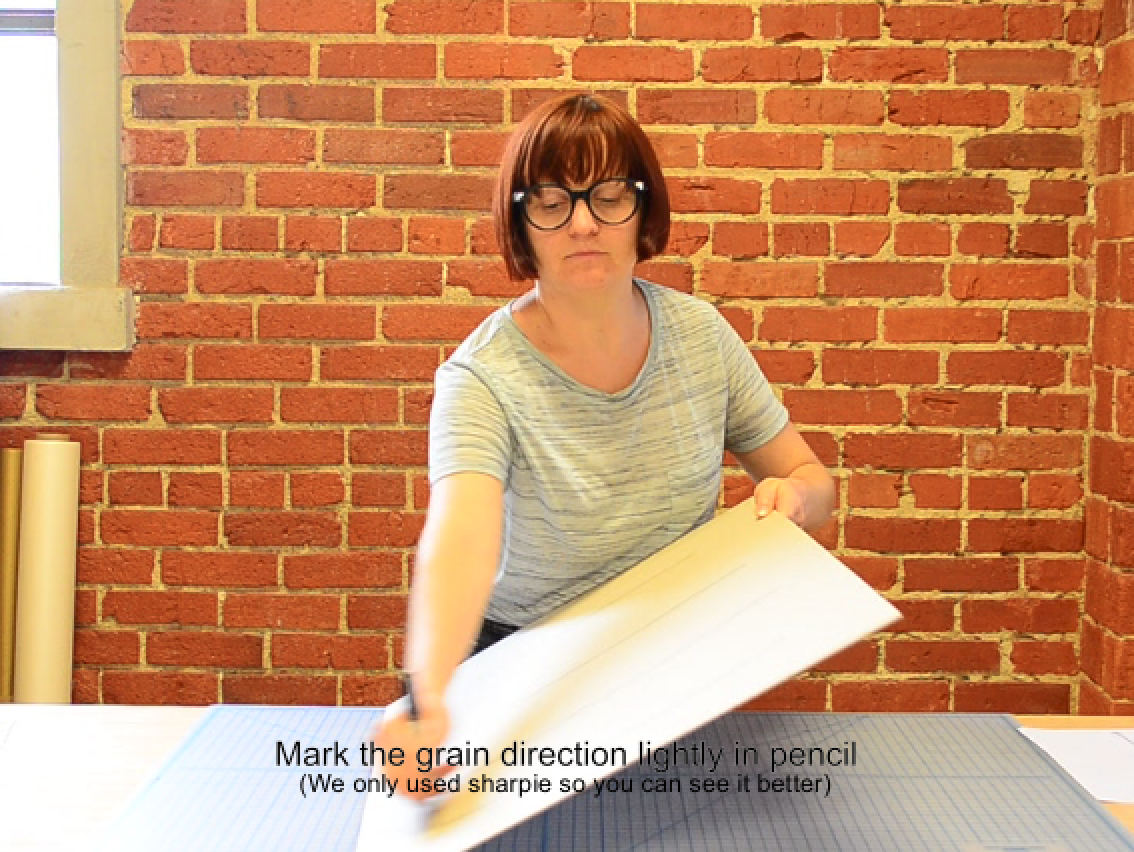
Grain Direction refers to the way the fibers in paper or board align during the papermaking process. Usually, they will line up in one direction or the other, parallel to each other. There are exceptions to this, of course, such as mulberry paper, which has very long, matted fibers no uniform grain direction. However, most paper and board has a grain direction.
If the grain runs parallel to a sheet of paper’s short side, we’ll use the term short grain, and if it runs parallel to the long side, it is long grain. We also recommend marking up your board when you receive by drawing multiple parallel lines along the grain direction as it can become increasingly difficult to determine grain direction once you’ve cut your board and are left with smaller pieces.

Why does any of this matter for bookbinding? Paper and board, much like the fibers that they are generally made from, are sensitive to environmental factors, such as heat and moisture. The grain also creates a natural direction the materials will tend to flex, fold and tear, which is parallel to the grain direction. Therefore, it is important that the grain direction be parallel to the spine. If it is perpendicular, the covers may not lay flat, and the pages will not turn smoothly. Additionally, in making the grain direction of your cover boards parallel to the spine, you are making it perpendicular to the foot of the book, which will give it strength and durability as it will presumably be placed on a shelf resting on this edge.
Mixing grain directions can result in a book that refuses to remain shut, which to a voracious reader makes a great metaphor, but in actuality is a huge bummer. Lastly, realize that when you are gluing end sheets to your cover board, you are introducing moisture in the form of wet glue. Even though you will press your book to dry, there will be a certain amount of shrinking and warping as the glue dries. Mixing grain direction will cause unsightly wrinkles and may also result in a book that refuses to close.
Sometimes, the grain direction is apparent, the fibers are laid out in a way that is visible if you look close up or hold it up to the light. But if you are uncertain, there are a few ways to test your book board or paper. For board, the best way to check for grain direction is to gently bend it one way, then the other. It will flex most easily parallel to the grain. Sometimes the bend test can be difficult to determine grain on lighter weight papers. For these, take a test sheet and try tearing it or moisten it. It will tear or warp parallel to the grain.
There is some disagreement on whether grain direction is as crucial in bookcloth. There are a wide variety of bookcloth weights, textures and styles, some are paper backed, and some starched (to prevent glue seepage and bias stretch). We have been making books for over seventeen years, and have found that with the bookcloth varieties we’ve used, even paper-backed selections, grain direction has not played a critical role when gluing out and wrapping book covers. For us, it is more important to find the best fit and layout for a particular project. However for aesthetic reasons it is critical to keep the direction of the bookcloth consistent throughout your project as the weave of the fabric will look different in alternate directions.
Are you an experienced bookmaker who has a particular thought, experience or insight pertaining to grain direction? A bookbinding beginner who needs clarification or has an unanswered question about grain direction? Share in the comments below!

You must be logged in to post a comment.